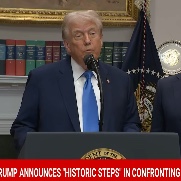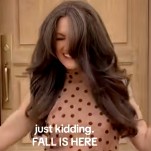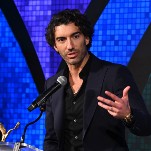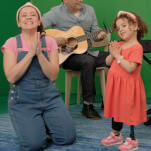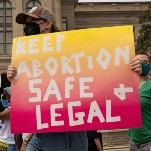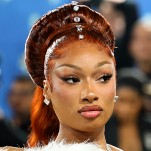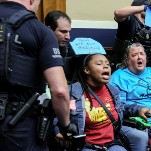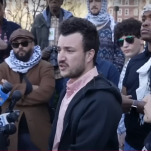How Horror Movies and Women’s Rights Have Been ‘in Lockstep’ Since the 1970s
Eleanor Johnson's new book, Scream With Me, examines how the rise of feminism was reflected in horror movies. “Even from the most hardcore, pro-life standpoint, you cannot root for Rosemary to keep that pregnancy,” she told Jezebel.
Photo: Getty Images (FilmPublicityArchive/United Archives, Sunset Boulevard/Corbis) BooksEntertainmentMovies
There’s an often repeated argument that horror has undergone an “elevation” in recent years, with sophisticated films such as Get Out, Hereditary, and The Babadook examining social and political issues through a spooky lens. But film critics will tell you that horror has always been political, and that’s the focus of Eleanor Johnson’s new book, Scream With Me: Horror Films & the Rise of American Feminism, 1968–1980.
The Columbia professor was teaching a class on the history of horror in 2022 when the Supreme Court’s decision to overturn Roe v. Wade was leaked. It just so happened that, the previous day, Johnson had delivered a lecture on Rosemary’s Baby. The 1968 Roman Polanski film adaptation of Ira Levin’s novel follows Rosemary Woodhouse (Mia Farrow) as her worrying pregnancy turns out to be a lot more troublesome: She’s carrying the antichrist and her husband and wacky neighbors are in on it. The film’s parallels to Roe—which enshrined the right to an abortion in federal law five years after Rosemary’s Baby premiered—and then the ruling that overturned it, Dobbs v. Jackson Women’s Health Organization, were stark.
“I thought to myself, there’s something here that’s larger than just a lecture,” Johnson told Jezebel in a recent conversation. That’s how Scream With Me took shape. The book analyzes how The Exorcist (1973), The Stepford Wives (1975), The Omen (1976), Alien (1979), and The Shining (1980), depicted women’s equal rights struggles during the second wave of feminism.
As we live through spooky season—that is, the month of October, but also this historically bad period for women’s autonomy—let’s examine what these films can tell us.
This interview has been edited and condensed for clarity.
Tell me about how the idea for Scream With Me came to you.
I read Rosemary’s Baby as a parable of denying women reproductive agency; even from the most hardcore, pro-life standpoint, you cannot root for Rosemary to keep that pregnancy, because she’s literally pregnant with the antichrist, so if you continue the pregnancy, you’re going against God. It’s a very interesting thought experiment.
I lectured about it in those terms and I talked a lot about the state of reproductive freedom in the state of New York at the time that the film came out.
I thought to myself, there’s something here that’s larger than just a lecture. When the Dobbs decision dropped, I had a sabbatical coming up. I already had tenure and had written several medieval books, so I thought, maybe I’ll use this sabbatical to explore this Rosemary’s Baby idea and canvas my mind about other horror movies from the same general period that speak in similar ways to issues of reproductive rights.
-

-

-

-

-

-

-

-

-

-

-

-

-

-

-

-

-

-

-

-

-

-

-

-

-

-

-

-

-

-

-

-

-

-

-

-

-

-

-

-










